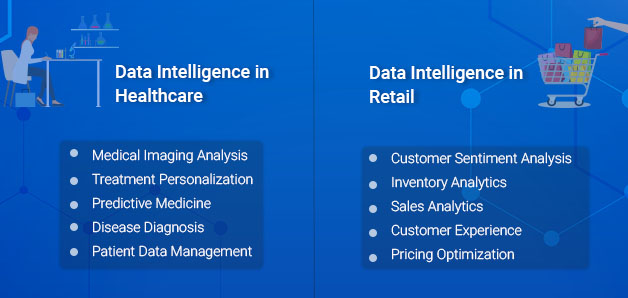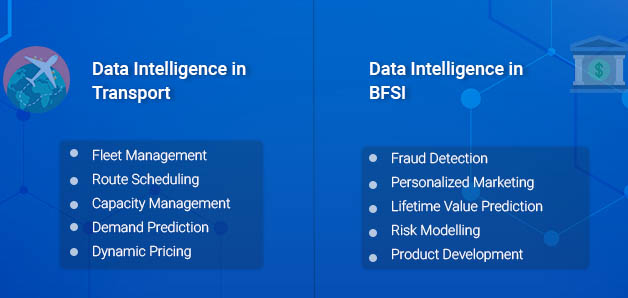What is Data Intelligence and How Data Is Transformed Into Intelligence?
What is Data Intelligence and How Data Is Transformed Into Intelligence?In this post, we will understand the entire process of transforming ‘data into data intelligence’ in a simple language for the benefit of people who are new to the world of data science and data intelligence. I have tried to avoid discussing data science technologies in detail and focus more on providing readers with a quick and broad understanding of the process.
‘Data is the new oil’ is an oft-repeated expression today in business circles. But data is like crude oil. It needs to be cleaned and processed to make it usable. If you harness your data correctly and extract data intelligence out of it, you can create new revenue models, optimize cost-efficiency and attract more customers.
Turning data into data intelligence which then transforms into strategic business values is a complex process. It requires business understanding and applications of deep data science technologies like AI, NLP, Machine Learning, and Computer Vision, amongst others.
So, how data is transformed into insights and intelligence?
But, first what is Data Intelligence (DI)?
DI refers to extracting insights from your data leveraging advanced data science technologies like AI, Machine Learning and Text Analytics, etc. Data Intelligence focuses on understanding relations between data, reading patterns, and providing insights for better decision-making. In simple words, data intelligence is the final output achieved by applying data science models to your existing data.
4 Ds That Turn Data into DI
Discovery– In this phase, you need to understand the nature of the problem you want to solve through data or the opportunity you wish to explore. Get into the detail of the problem or the opportunity to get a holistic view and define the goals your business expects to achieve.
Data Requirements– The second step involves taking a good look at the goals set in the first step to ascertain the data required to solve the business problem or exploit an existing business opportunity to your advantage. Does your business has the required data or do you need to start collecting it? Is the quality of your data good or needs to be cleaned? Answers to such questions help us define the data needs for a particular problem.
Data Science– Once you have the required data to solve your problem, it’s time to apply data science technologies to it. The data science technology stack is huge and you need to pick the right technology to process it to get the right answers to your problems. Depending on the technology chosen, data models will be built to derive insights from your data.
Data Visualization– Understanding the insights is key to success. The data insights extracted need to be comprehensible for both, technical and non-technical people for wider usage in an organization. Modern data visualization techniques can help you visually showcase complex data patterns and relationships in simple, easy-to-understand ways.
DI Applications in Industries


To meet the ever-changing needs of today’s global marketplace, companies need data solutions that are easily scalable, deliver high performance and support real-time insights.
Data Intelligence platforms such as Qualetics remove barriers of scale, investments, resources, and infrastructure to deliver ready-for-action intelligence.
